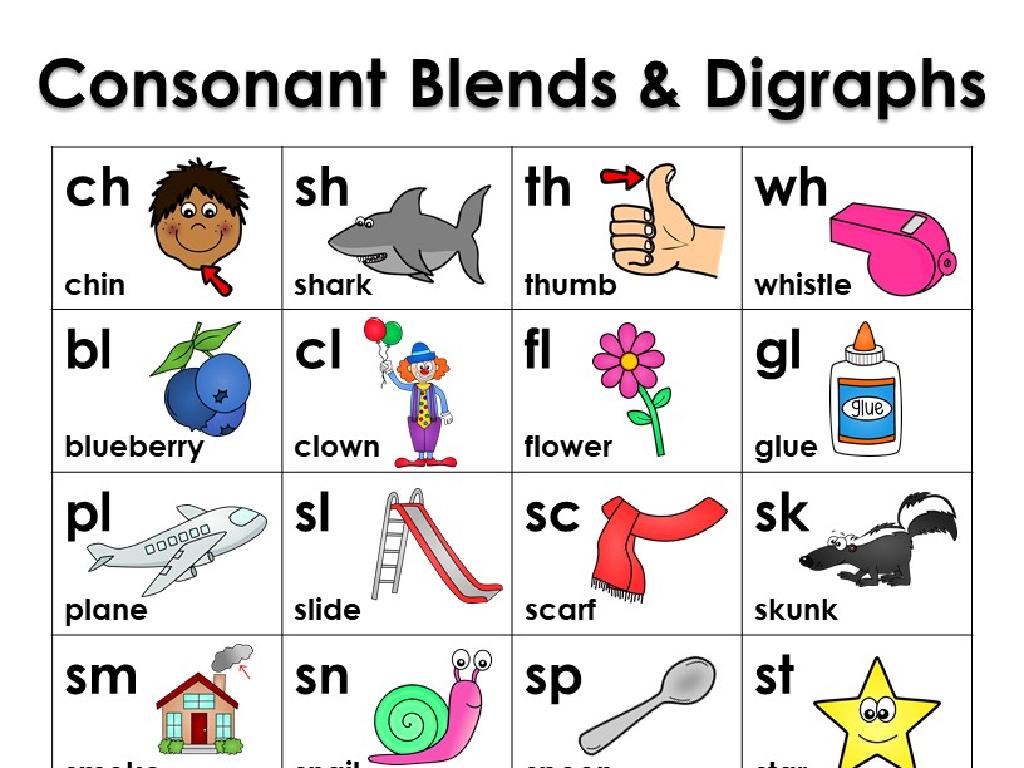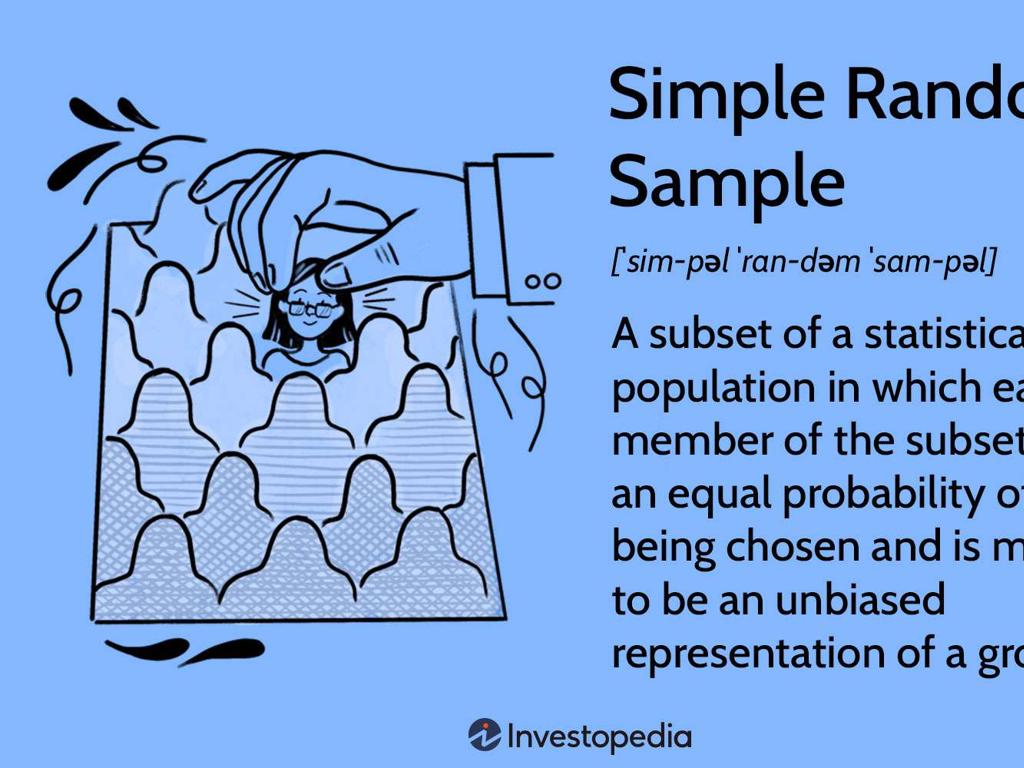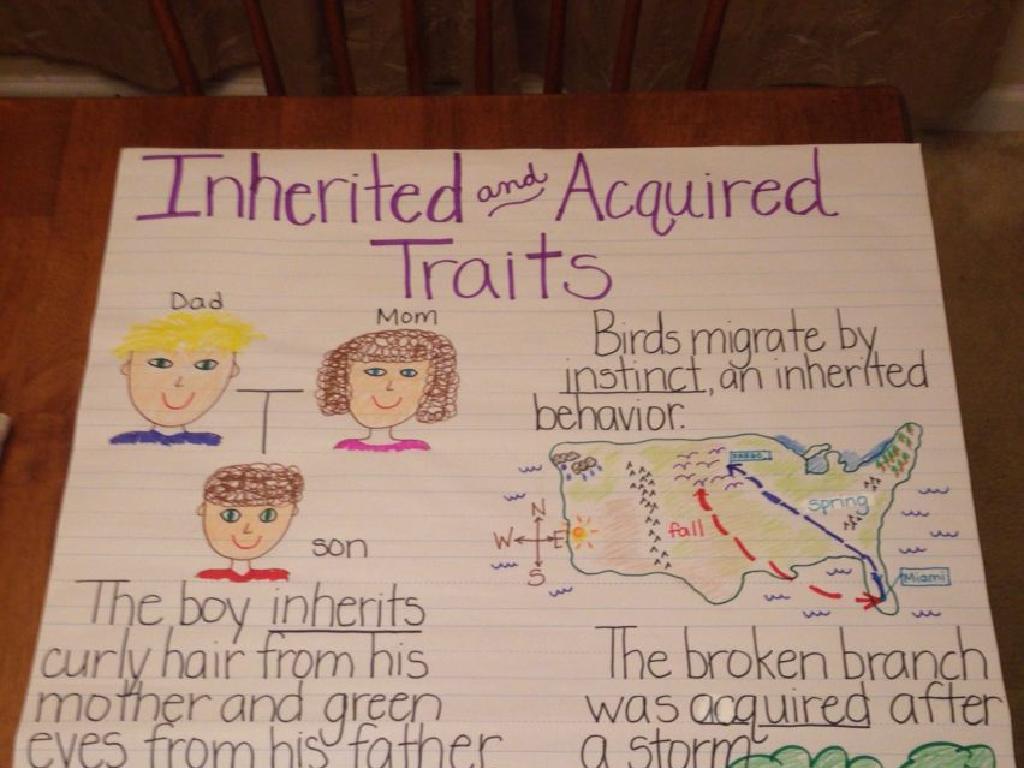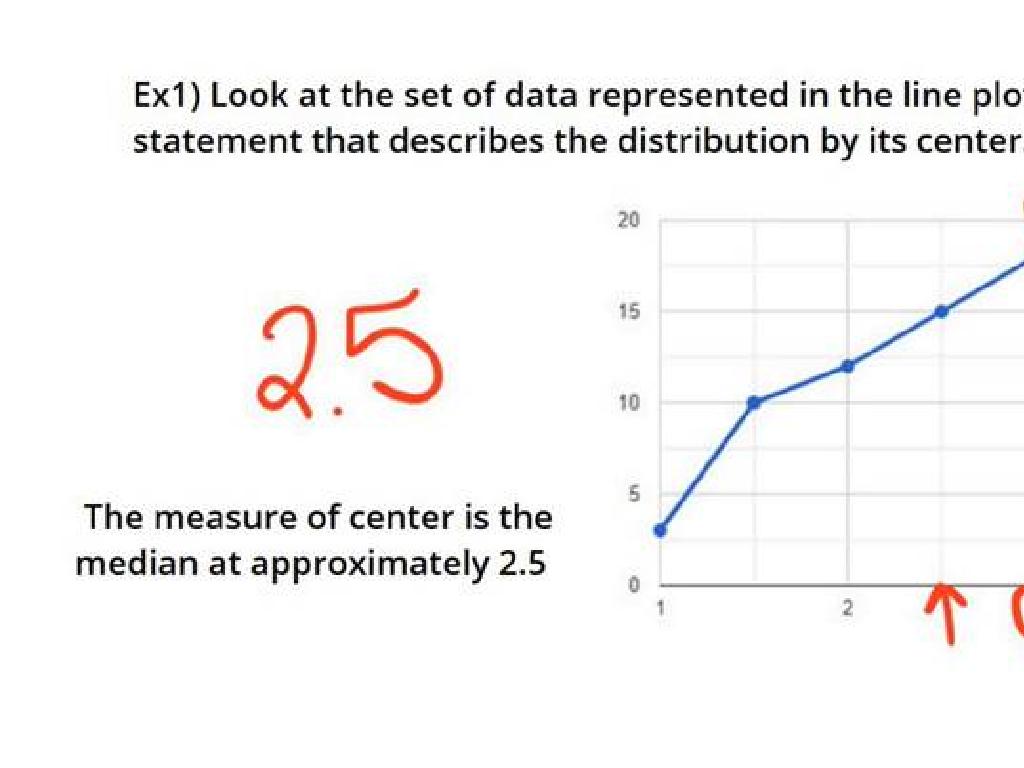Select The Detail That Does Not Support The Topic Sentence
Subject: Language arts
Grade: Third grade
Topic: Topic Sentences
Please LOG IN to download the presentation. Access is available to registered users only.
View More Content
Mastering Topic Sentences
– What’s a topic sentence?
– It’s the main idea of a paragraph.
– Why topic sentences matter
– They guide readers through a text.
– Today’s goal: Spot the odd detail out
– Find details that don’t fit with the main idea.
– Practice makes perfect!
|
This slide introduces the concept of topic sentences to third-grade students. Begin by explaining that a topic sentence is like the title of a paragraph it tells us what the whole paragraph is about. Emphasize the importance of topic sentences as they help readers understand and follow the main ideas in a text. Today’s objective is to teach students how to identify details that do not support the topic sentence, which is a critical reading comprehension skill. Engage the class with examples of paragraphs where one sentence doesn’t fit the main idea and have them practice identifying these outliers. This activity will enhance their analytical skills and improve their ability to focus on key ideas when reading.
Understanding Topic Sentences
– What is a topic sentence?
– It’s the main idea of a paragraph.
– Topic sentence placement
– Often the first sentence you read.
– Supporting the topic sentence
– All sentences should relate to the topic sentence.
– Finding the odd detail out
– Look for a sentence that doesn’t fit the main idea.
|
This slide introduces the concept of topic sentences to third-grade students. Begin by explaining that a topic sentence is like the title of a paragraph; it tells us what all the sentences in the paragraph will be about. Emphasize that the topic sentence is usually at the beginning of a paragraph. Then, discuss how every other sentence in the paragraph should give more information or support the topic sentence. Finally, teach students how to identify details that do not support the topic sentence, which is a critical reading comprehension skill. Use examples of paragraphs and practice identifying the topic sentences and unrelated details to reinforce the concept.
Supporting Details in Topic Sentences
– Details support the topic sentence
– Like clues in a detective story, details help us understand the main point
– They include facts, examples, descriptions
– Facts are real, examples show, descriptions tell more
– Details clarify the main idea
– Good details make the topic sentence stronger
– Some details don’t fit the topic
– We must find and remove details that don’t match the topic
|
This slide introduces the concept of supporting details as they relate to the topic sentence. It’s crucial for students to understand that supporting details are there to bolster the main idea presented in the topic sentence. They can be facts, which are true pieces of information, examples, which illustrate the point being made, or descriptions, which provide more depth. However, not all details are relevant, and part of developing good reading comprehension is identifying which details do not support the main idea. During the lesson, provide examples of paragraphs where one detail does not fit and have students practice identifying and explaining why it doesn’t belong.
The Odd One Out: Finding Details That Don’t Fit
– Not all details support the topic
– Some true details may not fit
– Our task: Spot the odd detail out
– Look for details that don’t match the main idea of the paragraph
– Practice removing the misfit detail
– We’ll do examples together to learn how to identify and remove them
|
This slide introduces the concept of identifying details that do not support the topic sentence within a paragraph. It’s important for students to understand that not every detail they come across will be relevant to the main idea. The objective is to teach them to critically analyze a paragraph and discern which details enhance the understanding of the topic and which ones are extraneous. During the lesson, provide several examples of paragraphs with one or two details that don’t fit. Work through these examples with the class, discussing why these details do not support the main idea and should be removed. Encourage students to explain their reasoning for a better grasp of the concept.
Finding the Odd Detail Out
– Read the paragraph as a class
– Spot the topic sentence
– The main idea of the paragraph
– Find supporting details
– Details that talk about the main idea
– Pick the detail that doesn’t fit
– Which sentence doesn t match the main idea?
|
This slide is aimed at teaching students how to discern relevant details in a paragraph that support the main idea, and identify the one that does not. Start by reading the paragraph together to ensure understanding. Then, guide the students to identify the topic sentence, which is the sentence that tells what the paragraph is about. Next, discuss as a class which details in the paragraph support that main idea. Finally, challenge the students to think critically and select the detail that seems out of place or does not support the topic sentence. This exercise will enhance their reading comprehension skills and their ability to analyze text structure.
Practice Time: Finding the Odd Detail Out
– Let’s analyze example paragraphs
– Work together to spot unsupportive details
– Pair up and look for sentences that don’t match the main idea
– Discuss why some details don’t fit
– Think about how each detail relates to the topic sentence
– Get ready to share your thoughts
|
This slide is designed for a classroom activity where students will practice identifying details that do not support the topic sentence in a paragraph. Students should be paired up to encourage collaboration. Provide them with example paragraphs and instruct them to read carefully, looking for any sentence that seems out of place or doesn’t connect well with the main idea of the paragraph. Encourage them to discuss with their partner why they think a particular detail doesn’t fit. This will help them understand the importance of coherence in writing. After the activity, ask pairs to share their findings and explanations with the class to reinforce their understanding and to facilitate a group discussion.
Class Activity: Detail Detectives
– Become a detail detective!
– Each group gets a mystery paragraph
– Find the out-of-place detail
– Look for the sentence that doesn’t fit the main idea
– Explain your reasoning to the class
– Think like a detective and use clues from the paragraph
|
In this interactive class activity, students will work in groups to analyze a paragraph and identify the detail that does not support the main topic sentence. Each group will receive a different paragraph with one ‘mystery’ sentence that doesn’t fit. The goal is for students to use their critical thinking skills to determine which detail is the odd one out and to explain why it doesn’t belong, based on the context of the paragraph. This exercise will help students understand the importance of coherence in writing and improve their ability to discern relevant information. For the teacher: Prepare diverse paragraphs with varying topics and one unrelated sentence in each. Guide the students on how to present their findings and encourage them to justify their reasoning with evidence from the text.
Conclusion: Understanding Topic Sentences
– Importance of related details
Related details make our writing clear and easy to understand.
– Ensuring details support topics
We can ask, ‘Does this detail fit with the main idea?’ to check.
– Reflect on today’s learning
Knowing about topic sentences helps us write better paragraphs.
– Share your thoughts
|
As we wrap up today’s lesson, emphasize the importance of keeping details related to the topic sentence to maintain clarity in writing. Teach students to critically evaluate each detail by asking if it supports the main idea. Encourage them to reflect on what they’ve learned about topic sentences and supporting details, and how this knowledge can improve their writing skills. Finally, create an open discussion where students can share their thoughts and understanding, reinforcing the day’s lesson and allowing for peer learning.





